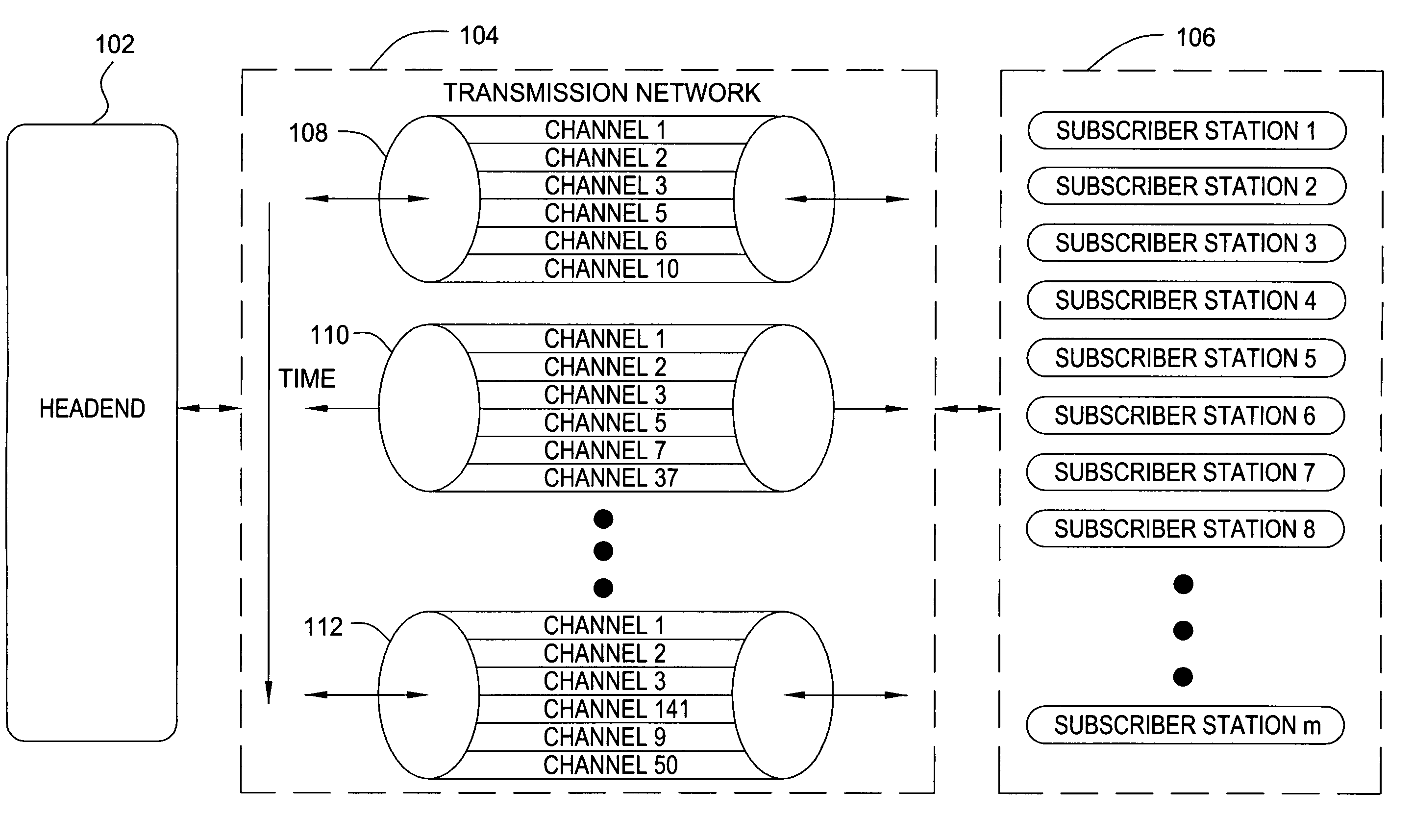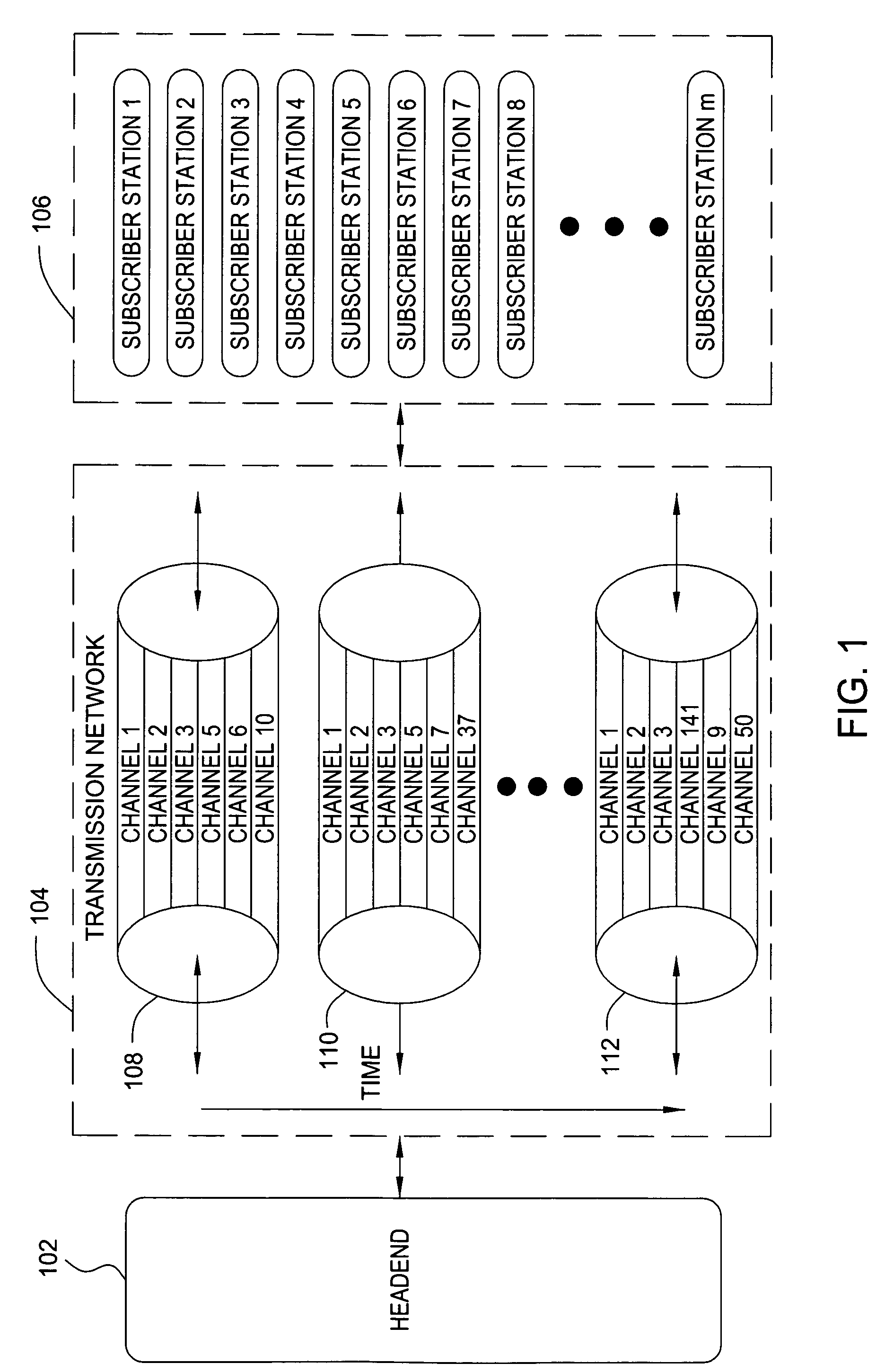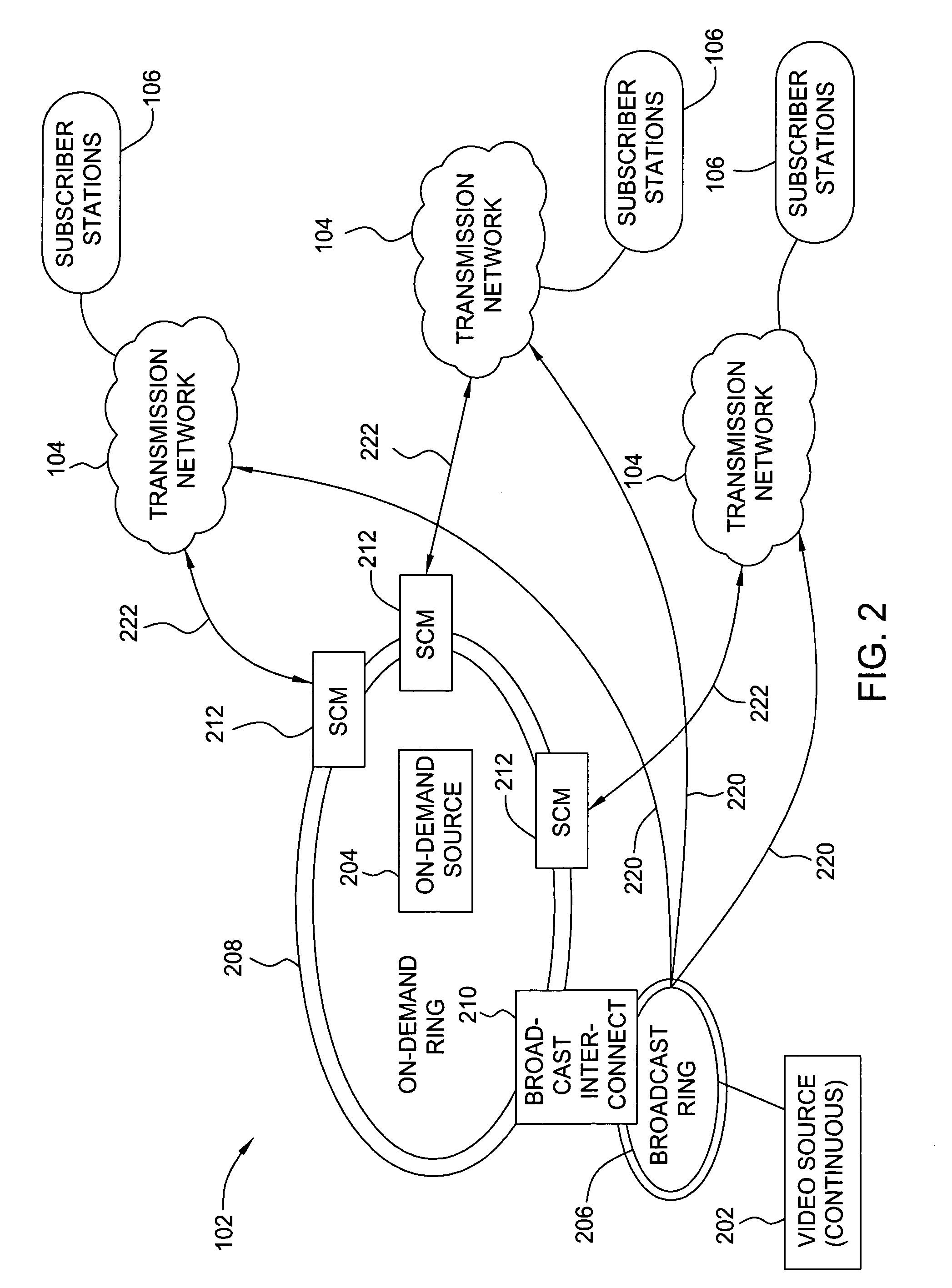Network bandwidth optimization by dynamic channel allocation
a dynamic channel allocation and network bandwidth technology, applied in the field of network bandwidth utilization, can solve the problem of dramatic increase in the chance of transmitted programming not being seen, and achieve the effect of increasing channel utilization
- Summary
- Abstract
- Description
- Claims
- Application Information
AI Technical Summary
Benefits of technology
Problems solved by technology
Method used
Image
Examples
Embodiment Construction
[0019]The following description describes embodiments of the present invention that operate in the context of a cable television transmission system. While the principles of the present invention are particularly useful in such a system, such principles may be applied to other transmission networks. Moreover, such principles need not be limited to wired networks. Wireless transmission schemes may also benefit because of the limited bandwidth allocated by the Federal Communications Commission for various wireless transmission applications.
[0020]Traditional cable networks provide programming via a plurality of channels, regardless of the usage of the channels. Individual channels may have extremely low usage by the cable customers, but are provided as part of a package of the services by the cable operator to encourage customers to subscribe to the service. In addition, cable operators are subject to must-carry regulations that specify that some service must be carried regardless of t...
PUM
 Login to View More
Login to View More Abstract
Description
Claims
Application Information
 Login to View More
Login to View More - R&D
- Intellectual Property
- Life Sciences
- Materials
- Tech Scout
- Unparalleled Data Quality
- Higher Quality Content
- 60% Fewer Hallucinations
Browse by: Latest US Patents, China's latest patents, Technical Efficacy Thesaurus, Application Domain, Technology Topic, Popular Technical Reports.
© 2025 PatSnap. All rights reserved.Legal|Privacy policy|Modern Slavery Act Transparency Statement|Sitemap|About US| Contact US: help@patsnap.com



